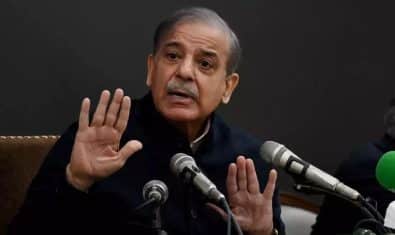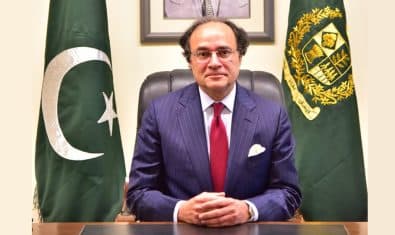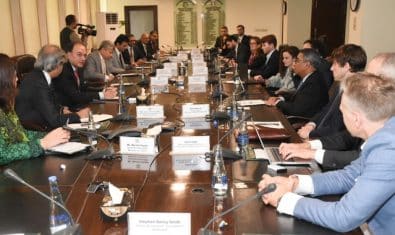Pakistan’s penetration rate of optical fiber stands at merely 1 percent which is far lower than the regional peers such as Vietnam with a penetration rate of 44.5 percent and Malaysia with 32.1 percent, according to an OICCI report quoted by IDATE.
The report mentioned that only 9 percent of cell towers are connected to fiber optic, compared to international benchmarks of 40 percent and regional comparisons of 80 percent in Malaysia and 90 percent in Thailand.
Whilst the global fiber optics market is expected to reach USD 8 billion by 2026, only a meager USD 150-250 million are invested into this sector, despite requiring at least 10 times the amount in order to meet market requirements. As a result, Pakistan is progressing slowly in the digital race compared to the neighboring countries, the report issued by OICCI on the digital economy said.
The remote regions and rural areas have a limited footprint in terms of fixed broadband services, which additionally differs within cities depending on the socioeconomic profile of each region.
The absence of true competitiveness in the market, with PTCL holding an estimated market share of 70-75 percent until 2020, thereby disincentivizing greater developments and an effort to increase the capacity of operations.
The government’s high licensing fees, duties, and challenges hamper the local development of fiber optics. Whilst the government introduced a 20 percent regulatory duty on importing fiber optic cables in 2022 in an effort to promote local development, this only served to increase the costs by 107 percent. Rather than fast-tracking the telecom sector towards more growth, this instead debilitates the sector.
The Ministry of Information Technology and Telecommunication (MOITT), through its Universal Service Fund (USF), launched seven projects worth over Rs. 8 billion to provide broadband services to over 2.5 million people in the un-served and under-served areas of Pakistan, including Rs. 3.5 billion for projects in Balochistan. It has further set budgets of Rs. 10 Billion for projects providing high-speed mobile broadband access to 11 million people in 4,025 unserved and underserved areas in the country.
The only logical way forward is to build on the progress made thus far to enrich Pakistan’s broadband suite by strengthening its fiber optic backbone.
Recommendations
Based on the current situation analysis and study of global use cases, the report recommended the following:
- The government should create a favorable investment environment for local and international investors with the SBP providing financing schemes at favorable rates by balancing import duties on fiber optics and preventing import dumping strategies by foreign players. The priority of investment in fiber optic needs to be increased, and optic fibers must be spread to at least 3,100 out of 6,000 union councils (UCs).
- The expansion should prioritize industrial and commercial areas, and simplify the provision of building and site permits, whilst promoting the development of new construction techniques such as micro trenching and above-ground laying techniques to ensure cable networks are deployed faster and with less disruption.
- Outstanding licensing disputes among telecom companies should be settled to remove their grievances and incentivize the companies to further invest in improving the country’s telecom landscape.
- Initiatives must be taken to encourage local fiber optic manufacturing (including tax breaks, funding incentives, etc.), which would reduce the import burden and produce jobs and economic growth in the long run.
- Subsidize optic fiber connectivity to all unserved Union Councils (UCs) in a phased manner, connecting inter-alia towers of mobile broadband, rural schools, local government offices, healthcare centers, WiFi hotspots, etc. in the UCs.
- Review future USF Agreements with the operators so that equal and non-discriminatory access to the fiber bandwidth is available to all potential users.
- Ensure that wherever USF subsidizes upgrades in its “Next Generation Broadband for Sustainable Development” program (2G to 3G/4G), only optic fibers are used in the backhaul to connect the towers – at least the hub sites. For this, the last-mile wireless/mobile operators may bid in consortium with their LDI partners.
- Reduce taxes on optic fiber, broadband users, and USF funding. Reduce the import duty from 20 percent back to the original 10 percent, in order to promote the local development of fiber optic cables.
- Allow tax-free and mandatory universal internet access across the country (especially in small cities and far-flung areas) for education and healthcare purposes.
- Reconsider the current GST of 19.5 percent charged to broadband users. Doing so will increase the adoption of fiber connected to the home and businesses.























living in town without real 4G coverage ot Ufone in 2023 is reality, but thanks to local ftth provider giving Us faster internet
I’m still on ptcl copper where upload max is 128KB/s and we are living in 2023. IT ministries are incompetent super heroes and failed to facilitate public.